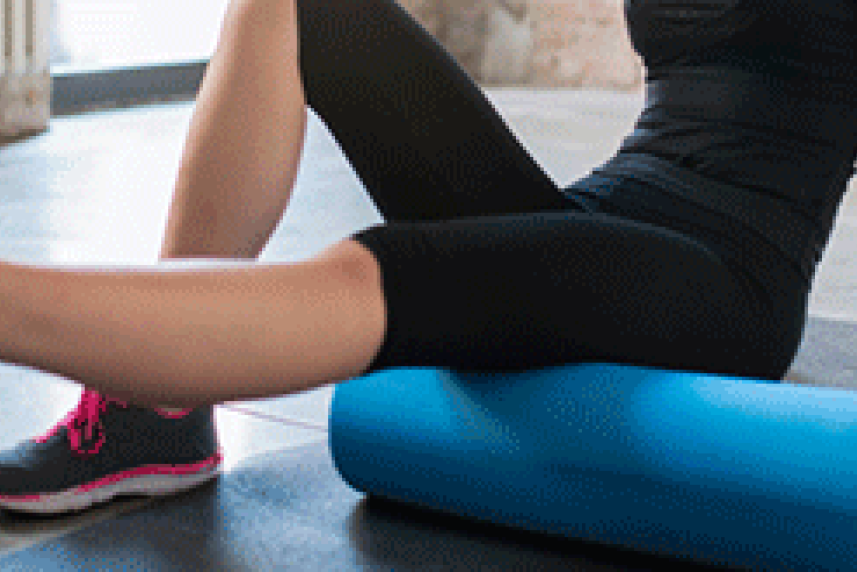How to use a foam roller
Find out how a foam roller can help ease tense muscles.

Feeling stiff or sore? Instead of going for a pricey massage, try foam rolling. Part physical therapy and part workout, foam rolling is a type of soft tissue massage that focuses on releasing the tension in the fascia, the soft connective tissue that surrounds your muscles, bones, and blood vessels. Foam rolling also teaches you how to listen to and move with your body, such as by pausing when you feel pressure.
Think of foam rolling like a DIY mobile massage—something you can do on your own time and with nothing more than an inexpensive tube of hard foam. Here’s what you need to know, plus two moves to try:
Who Should Do It
While it may seem like an activity for people with injuries, foam rolling is something anyone can do. “It’s safe and worth your time,” says Mike McArdle, a yoga instructor based in New York City. Foam rolling will relax your body, increase your range of motion, and take knots out of your muscles.
For people who work out frequently, there’s an added bonus: When you exercise, you build up scar tissue in and around muscles, and without proper stretching or massage, muscles become shortened and stiff. Foam rolling breaks up that scar tissue, rejuvenating muscles for enhanced performance.
How It Works
McArdle categorizes foam rolling moves into two different approaches: acupressure and follow-through moves. For acupressure, you pause to put pressure on painful spots to release tension, and pain should subside after 30 to 40 seconds. In follow-through moves, you roll from the top attachment of a muscle to the bottom (i.e., for your quadriceps, from your hip to your knees) and do not pause in uncomfortable spots.
Foam rolling exercises are also divided into passive and active moves. In passive moves, your body relies on gravity, but active moves require your body to support the motions.
Try It Now
To start, purchase an inexpensive foam roller from a sports store or online. Typically, rollers are 6" in diameter and 36" long, which works for most people. Then try these two simple moves from McArdle:
IT Band Release (Active follow-through move with acupressure)
Benefit: Releases the IT band, or the outer part of the thigh, and loosens stiff knees after a run or lower body workout.
Lie on your right side with the foam roller perpendicular to your body and under the bottom of your hip bone, keeping your hips stacked. Support your upper body with your right forearm and place your left hand on your left hip. Bend left knee and cross left foot in front of right leg, keeping right leg straight. Roll on the outside seam of your right quadricep from your hip to your knee slowly, up and down for 1 minute. Pause for a few seconds where you feel pain. Repeat on the other side.
Spine Release (Passive acupressure move)
Benefit: Opens up chest and is especially useful for people with tightness from sitting all day or prolonged stress.
Lie down on the foam roller so that your head is supported at the top and your spine is resting on the roller. Keep your legs straight and stretch your arms out to either side. If you have lower back problems, bend your knees instead. Feel the gentle stretch across the front of your chest to your underarm area. For a more intense stretch, make sweeping motions on the ground as if you’re making a snow angel. Make the move bigger by lifting your arms off the ground and your hands away from your head, sweeping your arms over your body toward your hips, and then back up in a circle. “Because of the circles you’re making, you’ll massage your shoulders,” McArdle says.
Talk to your doctor before beginning a new exercise program.


